A traditional trademark consists of letters, numerals, words, pictures, symbols, or a combination of one or more of these elements. In contrast, a nontraditional trademark is one that consists of colors, sounds, or smells, any combination of such signs, or position marks (marks that appear in a particular position on a product). Although no such distinction exists under the Trade Marks Ordinance Cap. 559 (TMO) of the laws of Hong Kong, the Hong Kong Trade Marks Registry (Registry) seems to adopt a stricter requirement of distinctiveness for nontraditional marks (NTMs).
The TMO provides for the registration of smells, shape marks, colors, and sounds, and, with the exception of smells, these marks have been successfully registered for some time in Hong Kong. Other NTMs, such as position marks, movement marks, and hologram marks, are not specified under the TMO but are nonetheless allowed for registration.
That being said, a trend of objections and refusals of NTMs comprised of position marks or color marks (single color marks or those of two or more colors) has recently emerged. This trend may indicate a more stringent approach toward the examination of NTMs. This article explores these recent trends and the treatment of these two types of NTMs.
A position trademark is a type of NTM consisting of the specific way in which the trademark is placed on or affixed to the product. It is commonly found in relation to shoes and clothing.
Generally, position marks are perceived as nondistinctive because they appear to be decorative or functional elements of the product. Applicants can overcome this objection by filing evidence of use in Hong Kong to prove that the mark has acquired distinctiveness. Below are examples of two marks that have been accepted based on evidence of use for footwear in Class 25:
| Trademark | Registration No. & Date | Owner |

|
2000B07943June 10, 1996 | Reebok International Limited
|
| 300270549 August 19, 2004 |
adidas AG
|
Not all position marks are registered based on distinctiveness acquired through use. Below are three examples of position marks registered for footwear in Class 25 without the need to submit evidence of use:
| Trademark | Registration No. & Date | Owner |
 |
302125340 December 28, 2011 |
Vans, Inc.(Vans) |
 |
303305141 February 13, 2015 |
CAMPER, S.L (Camper) |
|
|
303794086 June 1, 2016 |
Alpargatas S.A. |
Where a position mark consists of a house mark or other distinctive word or device elements, generally the mark as a whole would be considered as distinctive, as seen in the above mark registered by Alpargatas S.A. containing the word “havaianas” and a pattern on the mark. The other two examples of position marks registered by Vans and Camper without any word or device elements tend to be the exception rather than the rule.
"Generally, position marks are perceived as nondistinctive because they appear to be decorative or functional elements of the product."
In some instances, even with the submission of evidence, the Registry has refused applications for position marks as it does not find that the evidence submitted is sufficient to prove that the mark has become distinctive as a result of the use made of it in Hong Kong. Below are two position marks applied for by Vans for footwear in Class 25 that the Registry has refused, with its reasoning also summarized below:
| Position Mark | Application No. & Date | Decision of the Registry |
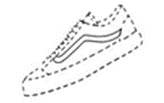
|
302125359December 28, 2011 | Decision dated February 23, 2015:
The wavy stripe is apparently a staple feature in that it is common to find stripes, whether straight or curved, printed or sewn at the sides or other areas of the applied-for goods as decorations or embellishments. Accordingly, the mark is a very simple design, which merely serves a decorative function. Almost all the evidence submitted included other Vans marks and the subject mark is always printed or sewn on the side of shoes but never featured on its own. The subject mark is likely to be perceived as merely decorative instead of designating trade origin. |
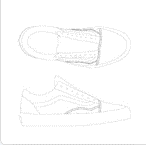
|
304829077 February 14, 2019
|
Decision dated February 8, 2023:
In my view, the subject mark, even represented in the way aforesaid, is a banal design and there is no particular fanciful or memorable element in it that catches one’s attention or leaves an impression in people’s minds. Based on my analysis of the evidence, I am not satisfied that the applicant has been successful in proving that the subject mark has acquired the minimum degree of distinctive character necessary for protection in respect of the applied-for goods in Hong Kong as at the date of application as a result of the applicant’s alleged use and/or promotion of the subject mark. I must emphasize that there is no evidence showing that the applicant has done anything during the use of the subject mark to identify the subject mark as being a trademark in relation to the applied-for goods in Hong Kong. I am not convinced that the applicant’s alleged use of the subject mark has displaced the public’s general perception of the subject mark as a common embellishment and has come to denote the mark of a particular trader. It should be born in mind that proof of extensive use alone may not be sufficient, especially in relation to a commonplace mark like the subject mark. |
Position marks are also commonly used on clothing and the registrability of the marks depends on the design or the trademark positioned on the product, as seen in the examples below:
| Position Mark | Application No. & Date | Owner | Status
|
 |
303612979 November 30, 2015 |
adidas AG | Registered
|
 |
302963421 April 15, 2014. |
2XU Pty Ltd | Registered |
|
|
302963430 April 15, 2014 |
||
 |
302963458 April 15, 2014 |
Generally, position marks will face registrability objections. Brand owners need to submit a substantial amount of evidence of use and take extra steps to highlight the relevant trademark in its promotional materials, such as adding the TM symbol next to the mark in question.
Single Color Marks
Trademarks consisting solely of color or colors are registrable if capable of distinguishing and being distinctive. A mark’s capability to distinguish depends on the customary use of the mark as an indication of origin in the industry concerned and the views of relevant consumers.
Consumers are generally not accustomed to making assumptions about the source of goods based only on the color of the goods or their packaging and must rely on additional graphic or text elements.
"The burden of use is substantial, and as far as we are aware, no applicant has been successful in registering a single color block for goods."
If an applicant can establish acquired distinctiveness, the applicant may be able to register a single color mark for very specific goods or goods intended for a specific clientele or for a very unusual and peculiar shade or color in the relevant trade. The burden of use is substantial, and as far as we are aware, no applicant has been successful in registering a single color block for goods.
Tiffany & Co. (Tiffany) attempted to register its blue color trademark shown below:
| Color Mark & Description | Application/Registration No. | Application/ Registration Date |
Actual Date of Registration |
Class |
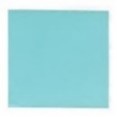 |
Application no. 302782549 | October 29, 2013 | – | 3, 8, 9, 10, 14, 16, 18, 20, 21, 25, 26, 28, 34, 35, 45 |
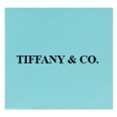 |
Registration no. 302782549AA | April 29, 2022
|
3, 14, 35 | |
| Registration no. 302782549AB | 9, 10, 16, 18, 20, 21, 25, 28 |
The blue color trademark the company applied for in October 2013 was registered after eight years in April 2022 in the form 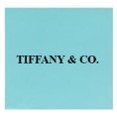 with the mark TIFFANY & CO. Tiffany has been long established in Hong Kong, and the eventual registration of the blue mark with the distinctive house mark illustrates the difficulty and challenge in registering a single color mark.
with the mark TIFFANY & CO. Tiffany has been long established in Hong Kong, and the eventual registration of the blue mark with the distinctive house mark illustrates the difficulty and challenge in registering a single color mark.
Trademarks consisting of a single line of color lack the ability to distinguish goods of one trader from goods of others or are considered merely decorative features applied onto the goods and indistinctive for registration.
Below are examples of recent attempts to register single color marks which the Registry has objected to:
| Color Mark and Description | Application No. & Date | Owner | Class | Status |
 |
305987639 June 17, 2022 |
OMICRON electronics GmbH (Omicron) |
9 | Examined—Further examination report issued
|
 |
305989123 June 20, 2022 |
Omicron | 6, 20 |
Marks Consisting of Two or More Colors
Trademarks having two or more colors combined have more distinctiveness and are generally registrable without acquired distinctiveness. Actual registrability depends on the presentation of the colors in the mark, the goods or services concerned, and public perception.
Below are examples of trademarks with two or more colors registered without acquired distinctiveness:
| Color Mark and Description | Registration No. & Date | Owner | Class |
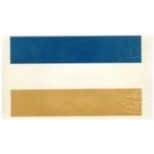 |
199706321 March 2, 1992 |
Visa International Service Association (Visa)
|
36 |
| 38 | |||
| 199602862 March 2, 1992 |
43, 44, 45
|
||
| 1994B07356 March 2, 1992 |
|||
 |
1998B07605AA March 31, 1995 |
Guccio Gucci S.P.A. (Gucci) | 18, 25 |
 |
302250620 May 15, 2012 |
7-Eleven International, LLC | 35, 43 |
 |
302928844 March 18, 2014 |
DNV GL AS | 9, 35, 37, 39, 40, 41, 42 |
 |
303062862 July 11, 2014 |
VANHECKE, PETER | 3, 14, 18, 25, 35 |
 |
303510666 August 19, 2015 |
Tommy Hilfiger Licensing B.V. (Tommy Hilfiger) | 3, 9, 14, 18, 24, 25, 35 |
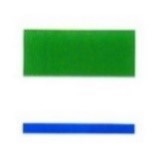 |
302621646, May 28, 2013 |
KABUSHIKI KAISHA FAMILYMART (FAMILYMART CO., LTD.)
(FamilyMart) |
35 |
| 303820581, June 27, 2016 |
|||
| 304638484 August 17, 2018 |
|||
 |
303673288 January 28, 2016 |
FamilyMart | 35, 43 |
| 35 | |||
| 304638475 August 17, 2018 |
|||
 |
304424184 February 6, 2018 |
South China Morning Post Publishers Limited | 9, 16, 35, 38, 41, 42, 45 |
 |
304989232 July 11, 2019 |
Polaroid IP B.V | 1, 9, 25, 35, 40 |
 |
305774888 October 18, 2021 |
Visa
|
36 |
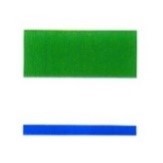 |
305874715 February 4, 2022 |
FamilyMart | 35 |
 |
305874724 February 4, 2022 |
FamilyMart | 35 |
Trademarks having two or more colors in the form of horizontal or vertical stripes in Classes 18 and 25 have been registered for bags, clothing, and footwear without use—for example, Gucci’s 1995 registration for  , for three green and red horizontal stripes. Gucci also has a 2004 registration for
, for three green and red horizontal stripes. Gucci also has a 2004 registration for  , for three red and blue vertical stripes (Registration no. 300217647), which was registered for use.
, for three red and blue vertical stripes (Registration no. 300217647), which was registered for use.
Below are applications of marks having two or more colors, which the Registry either objected to or refused:
| Color Mark & Description | Registration No. & Date | Owner | Class | Status
|
 |
305364702 August 19, 2020 |
Tommy Hilfiger | 18, 25 | Examined—Further examination report issued |
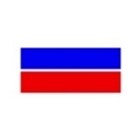 |
305414472 October 10, 2020 |
Sportsdirect.com Retail Limited (“Sportsdirect”) | 9, 16, 18, 21, 25, 28, 35 | Application refused |
A
B C D |
305598550 April 20, 2021 |
HUGO BOSS Trademark Management GmbH & Co. KG (“Hugo Boss”) | 9, 14, 16, 18, 24, 25, 27, 35 | Application refused |
 |
305955931 May 12, 2022 |
Consitex S.A. | 18, 25, 35
|
Examined—Further examination report issued |
 |
306194494
March 15, 2023 |
Hugo Boss | 35 | Examined—First examination report issued |
The Registry objected to Tommy Hilfiger’s mark  , claiming three colors despite the brand owner’s earlier registration for
, claiming three colors despite the brand owner’s earlier registration for  , claiming two colors. The refused mark
, claiming two colors. The refused mark 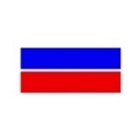 , claiming blue and red that Sportsdirect filed in 2020, was registered on use in the UK in 2021 in Class 35 for retail services relating to Class 18 and Class 25 goods.
, claiming blue and red that Sportsdirect filed in 2020, was registered on use in the UK in 2021 in Class 35 for retail services relating to Class 18 and Class 25 goods.
"Trademarks having two or more colors combined have more distinctiveness and are generally registrable without acquired distinctiveness."
The Registry refused Hugo Boss’s application for this mark  in April 2021 which claimed the colors camel, white, and black. The company refiled in March 2023 without a color claim, in Class 35 for retail stores, relating to clothing, footwear, headgear, and fashion accessories, and again faced objection.
in April 2021 which claimed the colors camel, white, and black. The company refiled in March 2023 without a color claim, in Class 35 for retail stores, relating to clothing, footwear, headgear, and fashion accessories, and again faced objection.
The trend for objections highlights that the Registry is conducting stricter examinations of marks having two or more colors in the form of stripes intended for use on bags, clothing, and footwear, because such use can be considered merely for decorative purposes, rather than as a badge of origin.
Trademarks consisting of a single color lack capacity to distinguish, and evidence of use— even long use in Hong Kong—may be insufficient to establish distinctiveness through use in Hong Kong.
Trademarks consisting of two or more colors are generally registrable, although colors in the form of stripes may lack distinctiveness if intended to be used as decorative stripes of color on clothing, bags, and footwear. However, the greater the combination of colors, the more distinctive the mark.
Although every effort has been made to verify the accuracy of this article, readers are urged to check independently on matters of specific concern or interest.
© 2023 International Trademark Association
Orginal article on INTA: https://www.inta.org/perspectives/features/what-you-should-know-about-registering-nontraditional-trademarks-in-hong-kong/
Authors:
Rouse
Hong Kong SAR, China
Non-Traditional Marks Committee
Wilkinson & Grist
Hong Kong SAR, China
Non-Traditional Marks Committee
Wanhuida Intellectual Property
Beijing, China
Non-Traditional Marks Committee